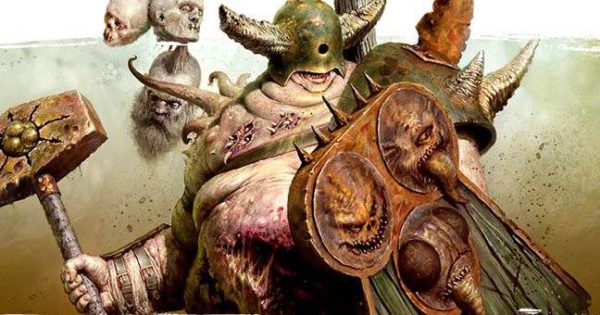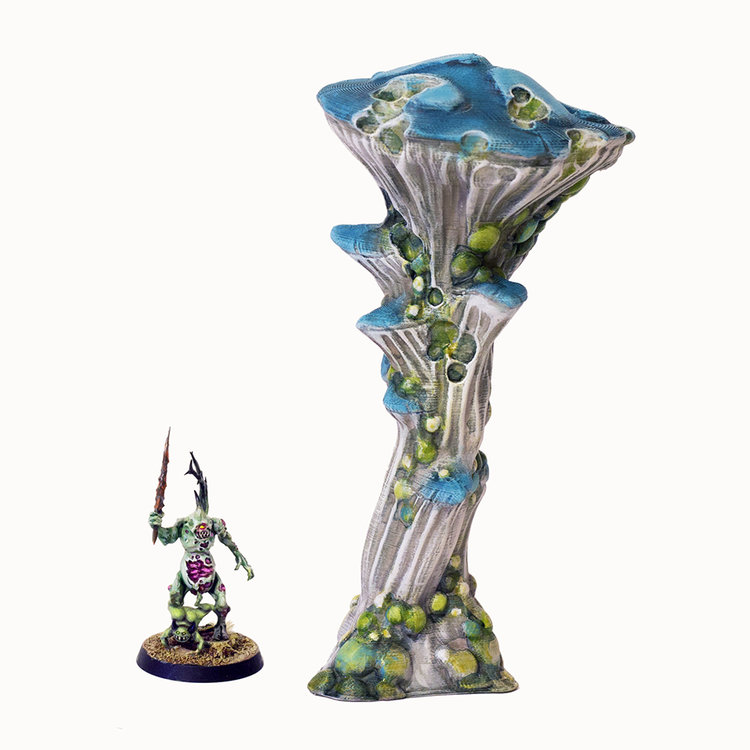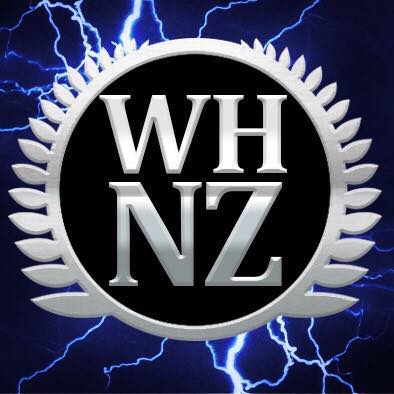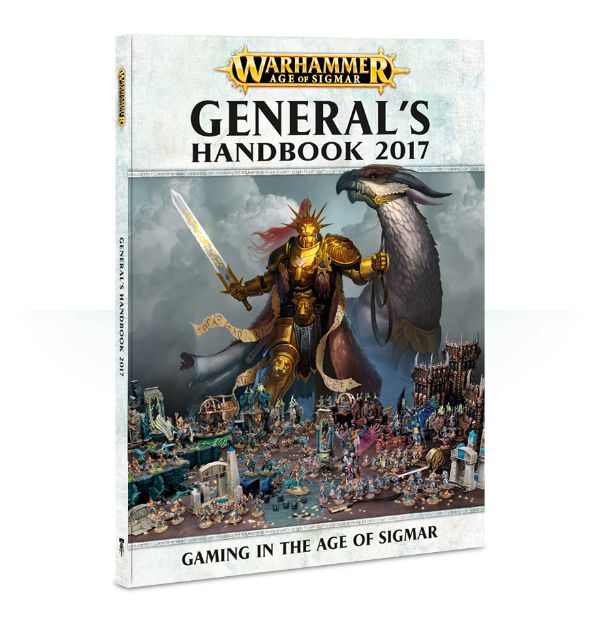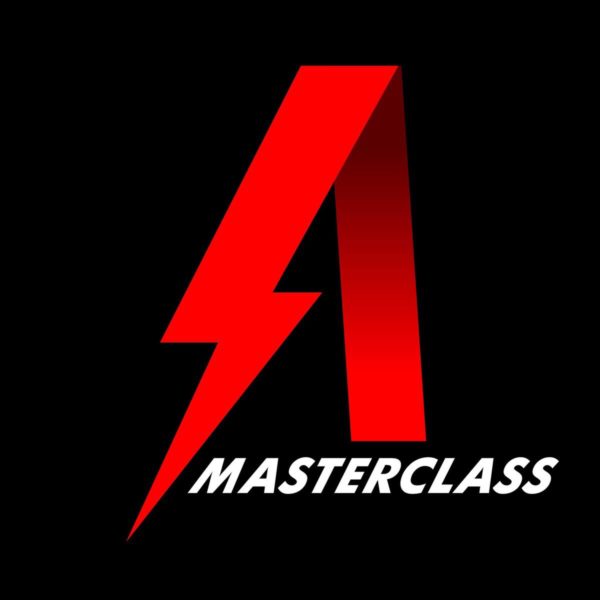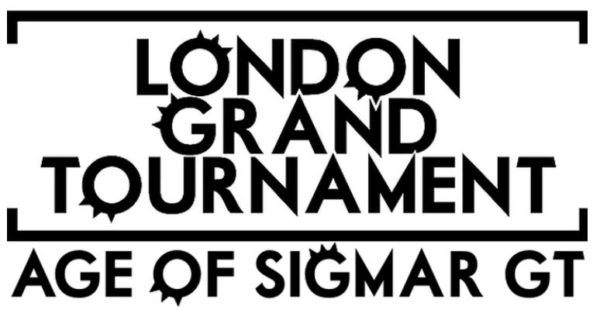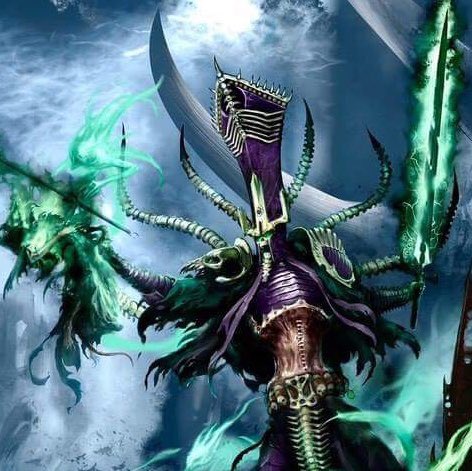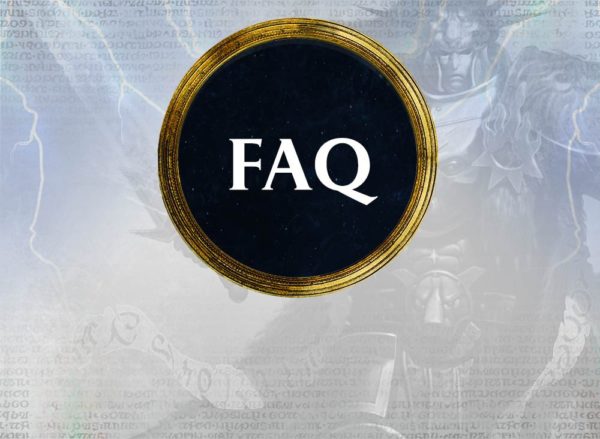Hey guys, welcome to the first AoS Shorts episode for 2018. With such a great release as Maggotkin of Nurgle, I just couldn’t resist putting out a show. Twitter is awash with green frothy enthusiasm and the book has been covered in detail by the great Facehammer podcast, Chris Tomlin’s on TGA and Tyler Mengel (links below), so I highly recommend you check them out. However, as always, I think there is room for the AoS Shorts treatment. So in the next 20 minutes or so, I hope to cover the key points you need to know – whether you intend to play Maggotkin or will be facing them on the tabletop.
[podbean resource=”episode=wzdvj-8372b4″ type=”audio-rectangle” height=”100″ skin=”2″ btn-skin=”109″ share=”1″ fonts=”Helvetica” auto=”0″ download=”0″ rtl=”0″]
- First impressions – Maggotkin of Nurgle playstyle
- Maggotkin of Nurgle allegiance
- Allegiance ability – Cycle of Corruption
- Feculent Gnarlmaw
- Contagion Points
- Command Traits
- Artefacts
- Lore of Nurgle
- Warscroll Battalions
- Allies and Summoning
- Maggotkin of Nurgle Army List Predictions
- Which armies will do well against Maggotkin of Nurgle?
- Conclusion and Further Reading
First impressions – Maggotkin of Nurgle playstyle
Overall, the Maggotkin of Nurgle battletome looks internally balanced with a range of choices for Nurgle generals. There seem to be few automatic selections and from all the chat that has been flying around, there are a lot of army list ideas out there. This has to be the just reward of the more extensive feedback and playtesting the book went through.
Resilient
In terms of playstyle, the Maggotkin are still super resilient – whether through debuffs to hit, more widespread methods for ignoring wounds and mortal wounds and through regeneration/healing. If you don’t apply enough firepower to your target, then you will quickly find those large models will be back up to full strength.
Movement buffs to overcome Nurgle’s slow nature
Characteristically Nurgle armies have been slow and shambling, but the new book allows you a number of ways to counteract that (through the new Feculent Gnarlmaws, the Bell on the Great Unclean One and the Cycle of Contagion). Don’t underestimate the speed with which you could have Nurgle units in your face early game.
Mortal wound output
Finally, the book is awash with mortal wound output. Not in a Disciples of Tzeentch way, but in a steadily chipping off a small number of wounds from multiple units kind of way. There are 2 infinite range spells that do D3 mortal wounds to multiple targets and 1 infinite range ability that does D3 mortal wounds to multiple units. Nurgle armies will grind you down and knock out your support heroes if you don’t neuter them.
Maggotkin of Nurgle rewards good play
Now, all of these characteristics can be tailored through intelligent use of command traits, artifacts and spells. However, in the new General’s Handbook 2017 world of higher cost battalions, you will need to make choices. You can’t have everything, and with the prevalence of special characters in Maggotkin of Nurgle lists (who can’t take generic traits), your available slots are even more limited.
So, in short, Maggotkin of Nurgle will reward top quality list writing and game management. This is definitely not an auto-win army but in the hands of a skilled general it will perform well. And there is enough choice that you won’t be bored with being pigeon-holed into one particular build.
Now with that out of the way, let’s look at the battletome in a bit more detail.
Maggotkin of Nurgle allegiance
Just like Blades of Khorne and the Disciples of Tzeentch, the Maggotkin of Nurgle army is split into three factions: Rotbringers, Mortals and Daemons of Nurgle.
Armies with the Nurgle keyword can have the Nurgle allegiance, and within that, units with the Rotbringers, Mortal or Nurgle Daemon key words can access the command traits, artifacts and spells available to those keywords. Because the army rests on the Nurgle keyword, you can freely use Pestilens and Slaves to Darkness units that share the Nurgle keyword (or that are given the keyword).
Allegiance Ability – Cycle of Corruption
The key allegiance ability is the Cycle of Corruption – the Nurgle wheel that we first saw in the Blightwar box (so pick one up for handy in-game tracking). The Cycle of Corruption contains 7 effects, buffs and debuffs that apply to the battlefield for that battleround. As the Cycle applies to the battlefield, it applies equally to both armies if you are playing against another Nurgle army.
At the start of the game, you roll a dice to determine the starting point on the wheel. Each turn the wheel moves clockwise at the start of the hero phase. Now one of the concerns of matched play gamers after seeing the Blightwar box was the difficulty of optimising list builds around a random roll. However, the battletome contains a number of ways that you can modify the wheel in order to get the bonus you want when you need it (in particular, the Grandfather’s Blessing command trait, and the Foul Regensis spell known by all Nurgle wizards). Through clever use of these abilities you can have mortal wound output every single turn.
Feculent Gnarlmaw
The second aspect of the allegiance ability is that Nurgle armies come with free terrain, just like Sylvaneth armies. At the beginning of the game, after rolling for scenario but before picking sides, a Nurgle player can set up a Feculent Gnarlmaw for free. The Gnarlmaw is an infected wood that has an aura which causes mortal wounds to nearby non-Nurgle units and allows Nurgle units within 7″ of it to run and charge!
More Gnarlmaws can be summoned during the game by using Contagion Points (which I’ll get to) or brought onto the table by Horticulous Slimux, allowing some great board control. I can also see them being very useful in scenarios which require heroes to hold objectives. Put a Gnarlmaw on the objective and watch your opponent’s 5 or 6 wound heroes get chipped away by the mortal wound aura.
If you are looking for variations or alternative models for the Gnarlmaw, check out @garrisimo’s over at Age of Hobby. They are a similar size and volume to the Games Workshop model. More links and pics below.
Contagion Points
So Contagion Points, Nurgle’s own mechanic similar to Khorne’s Blood Tithe. Nurgle armies earn Contagion Points in each of their hero phases based on having:
- units in your deployment zone
- units in your enemy’s deployment zone
- Gnarlmaws with no enemies nearby.
New Nurgle summoning rules
These points accumulate during the game and can be spent on summoning Daemons of Nurgle. The summoning rules for these Daemons have changed. You can no longer summon Daemons of Nurgle by casting spells (bye bye Plaguebearers in Tzeentch lists for instance) and can only do so by spending Contagion Points. Because you no longer cast a spell, there is no risk of being unbound, however you still pay reinforcement points for the unit in matched play. The summoned unit is set-up at the end of your movement phase within 12″ of a hero or Gnarlmaw and at least 9″ away from enemies.
Now, given how the points accumulate, I don’t see mass Nurgle summoning lists being popular or effective – it just takes too long to accumulate points (see JabberTzeentch‘s analysis below). The best use of the points seems to be to put more Gnarlmaws on the board early, and then perhaps summon a small unit for capturing objectives late game (or not at all).
Expected amount of Contagion Points if both sides have models in both territories on Turn 2 and there is 1 Gnarlmaw on the Board (same numbers based on 2 Gnarlmaws are in brackets).
Turn 1: 5-7 (6-10)
Turn 2: 13-17 (18-22)
Turn 3: 23-27 (30-34)
Turn 4: 33-37 (42-46)
Turn 5: 43-47 (54-58)
Command Traits
In terms of command traits, there are three shared command traits and three unique ones for each of Rotbringers, Mortals and Daemons of Nurgle.
As others have mentioned, I suspect the most common command trait you will see is likely to be Grandfather’s Blessing which allows you to move the Cycle of Corruption one way forward or back once per battle.
Artefacts
There are six unique artifacts for each of the factions. There is a lot of choice here so I’ll just touch on the most common ones you will likely see. For me, it is always worth using command traits and artefacts to support your army’s strengths rather than accommodate for their weakness.
Rotbringer
- Rustfang – which when it causes a wound permanently reduces the armour save of an enemy unit for the rest of the game.
- Muttergrub – which allows a wizard to cast an extra spell.
Daemons of Nurgle
- The Endless Gift – In the battleshock phase the model can heal wounds taken that turn.
- The Witherstave – Enemies within 12″ have to re-roll sixes to hit.
- Tome of a Thousand Poxes – +1 to cast for a wizard, non wizards get a spell.
There are also some really powerful, but unreliable choices available:
- Rotbringer: Fecund Flask – Once per game 2+ heal all wounds, 1 you die!
- Daemons: Nurgle’s Nail – If you cause wounds with this weapon, you can roll 2D6 and on a 7 auto kill the model.
- Mortals: The Eye of Nurgle – Once per battle, the nearest model to the bearer dies on a 2D6 roll of 7!
While these appear very powerful, the chance of rolling a 7 on 2D6 is 16.6%, or on average less than once a game if you could use it every turn.
Therefore, you will need to consider if the threat and board control of those artifacts are worth it vs something which may not be so sexy but will have more consistent and synergistic impact for your army.
Lore of Nurgle
The new Lore of Nurgle provides three spells per faction. Each Nurgle wizard knows the Foul Regensis spell in addition to one from their lore. This spell allows you to immediately reset the Cycle of Contagion to the stage of your choice (whether the effect goes off that turn, or simply sets you up for the next turn, will depend on the stage you choose).
High casting costs and short to mid range spells
As a general comment, the casting costs are high and the spells predominately have a short to mid range. Therefore, if you are building an army around the spells you will need to buff the cast. The Great Unclean One can now cast two spells and can be +2 to cast (using an artefact and the dagger), but is limited to the Daemon spells which aren’t as strong as the Rotbringer or Mortal spells.
Rotbringer spells
Rotbringer wizards can use Blades of Putrefaction which casts on a 7 and is a buff that means a unit inflicts a mortal wound as well as other damage if it rolls a 6+ to hit. Notable mentions for Rancid Visitations and Gift of Contagion but both are more situational.
Nurgle Mortal spells
The best spell in the Nurgle Mortals lore, if not the book, is Plague Squall which on a casting value of a 6 allows you to dish out D3 mortal wounds to D6 enemy units visible to the caster (unlimited range!)
Daemons of Nurgle spells
There are notable mentions for the Glorious Afflications and Favoured Poxes debuffs in the Daemon spell lore, especially if you are playing a contain list, but now you can’t summon a wizard and then cast the spell.
Warscroll Battalions
I’m not going to go into the warscroll battalions here as I believe Chris covered everything you need to know in his TGA post. However, I’d suggest that the most common battalion you’ll see is the Plaguetouched warband, which is in the Everchosen battletome. I’ll discuss why shortly in the potential army build section.
Allies and Summoning
Now on to allies. Maggotkin of Nurgle can ally with Khorne, Brayherds, Chaos Gargants, Everchosen, Monsters of Chaos, Slaanesh, Slaves to Darkness (excl Tzeentch), Warherds.
Three things to note:
- Hellstriders of Slaanesh could be a useful addition in a stacking debuff Nurgle army due to their -1 to hit 6″ bubble;
- you can still ally in a Gaunt Summoner with Familiars on Balewind thanks to the Everchosen keyword; and
- while you cannot ally in Tzeentch daemons, you can of course still summon them – so if you don’t care about the lore, feel free to summon in some Pink Horrors 😉
NB: I’ll update the Chaos Allies matrix in the Resources section this week.
Summoning choices
In terms of summoning, a pool of about 120 points would work well – you could summon a Beast of Nurgle for some crucial positioning, 10 Plaguebearers, a Balewind, or a Herald of Tzeentch if you want to use the 18″ mortal wound spell.
Maggotkin of Nurgle Army List Predictions
Now I’m going to have a go at predicting some likely Nurgle army builds. The Blightkings have been getting a lot of love online thanks to them getting cheaper and gaining an extra wound but I want to offer some alternatives. Both of these have been proposed by local mastermind James Page – so all credit and responsibility lies with him.
“Control and sustain”
The first is a “control and sustain” build which uses Rotigus’ Deluge spell, a Great Unclean One, Glotkin, and support casters to put out a range of buffs and mortal wounds behind a safe wall of resilient troops. I haven’t got a finished list in mind but the fundamentals are there for a solid list that will grind you down
Plaguetouched warband
The second is a Plaguetouched warband alpha-strike Chaos Knight list which can be one-drop or two. The Plaguetouched warband contains 1 mortal nurgle hero and 7 mortal nurgle units and makes its units -1 to hit in combat, and can give some units the ability to do mortal wounds back to opponents that attack them. Now, as we all know, Warhammer Weekly’s Tom writes all the successful lists in Age of Sigmar, and I know he has been a big fan of the Plaguetouched Warband – although I confess I haven’t seen or listened to his proposed list.
The list contains Glotkin, large units of Chaos Knights, a shrine and other support pieces. The aim is to tie up all your opponent’s resources dealing with a buffed Chaos Knight unit which is in their face turn one. The unit can be -1 to hit, have extra attacks for both the mounts and riders, re-rolling to wound, cause mortal wounds and be extra quick thanks to the Nurgle allegiance abilities. With the movement buffs, you don’t need Sayl and don’t have to worry about charging from 9″ away.
One drop Plaguetouched Warband
- Plaguetouched warband 100
- Glotkin 420
- Chaos Sorcerer 160
- 14 Chaos Knights 480
- 14 Chaos Knights 480
- Shrine 180
- 10 Marauders 60
- 10 Marauders 60
- 10 Marauders 60
- 2,000 pts
Two drop Plaguetouched Warband
- Plaguetouched warband 100
- Glotkin 420
- Rotigus 340
- Rotbringer Sorcerer 120
- 10 Chaos Knights 320
- 10 Chaos Knights 320
- Shrine 180
- 10 Marauders 60
- 10 Marauders 60
- 10 Marauders 60
- 1980 pts
This list foregoes the Plaguetouched warband buffs on the Chaos Knights but gives you access to the Rotigus Deluge spell and other mortal wound output to reach your opponent’s backline.
Check out the listbuilding show and the Masterclass podcasts to learn what to take into account when writing effective Age of Sigmar tournament lists.
Which armies will do well against Maggotkin of Nurgle?
Now which armies do I think will perform well against Nurgle?
Shut down the magic phase
Disciples of Tzeentch will of course still be strong – the army can unbind the Nurgle spells, has great chaff lines and can out duel Nurgle in the mortal wound fight (even with Nurgle’s disgustingly resilient saves). Seraphon lists should also do well at shutting down the Nurgle magic phase.
Pure alpha strike to stop the Nurgle grind
Given the grind nature of many Nurgle lists, it seems like you need a very efficient alpha strike that can take out the Nurgle characters and support pieces before the rest of the army is buffed up. Kharadron Overlords can achieve this, but if they don’t succeed then they will lose their own heroes very quickly and could be swamped under a green tide.
Pestilens – lovers of filth and weight of attacks
Finally, and don’t laugh, but Pestilens will actually play well against Nurgle. The army will benefit from all the Nurgle buffs, is protected from Nurgle’s mortal wound output generally, and thanks to the Gnarlmaws could have a massive wave of Plaguemonks in combat turn 1. If you make Nurgle take enough saves then not even the disgustingly resilient rule will save them. If you are interested in Pestilens, I highly recommend you check out local New Zealand player Aiden’s TGA blog, the “Acolytes of the Withered Word”.
Conclusion and Further Reading
Thanks for listening – get in touch and let me know what you think. It will be really interesting to see how the tournament meta changes over the next few months. I expect we won’t have as long to wait as usual given how quick and easy it is to paint up a Nurgle army!
Further reading, reviews and resources
For all the information you need on Maggotkin of Nurgle, check out all these great reviews and resources.
- Maggotkin of Nurgle with Andy Clark on Warhammer Live (subscription required)
- the Facehammer podcast review
- Tyler Mengel’s blog post review
- Chris Tomlin’s in-depth review on TGA
- Garagehammer podcast episode
- Warhammer Weekly with Paul Conti
- Age of Warhammer blog post review
- Hobbyhammer blog review
- Canhammer YouTube read along
- Let’s Chat Maggotkin thread (skip towards the end)
- Maggotkin of Nurgle Facebook group.
- Guerrilla Miniature Games review and game
- Artstation page for some of the Battletome art
- Games Workshop Miniature Designers’ Notes on the Maggotkin of Nurgle
Contact me on Twitter if you are interested in joining the WhatsApp group too.
Alternative Gnarlmaw models

